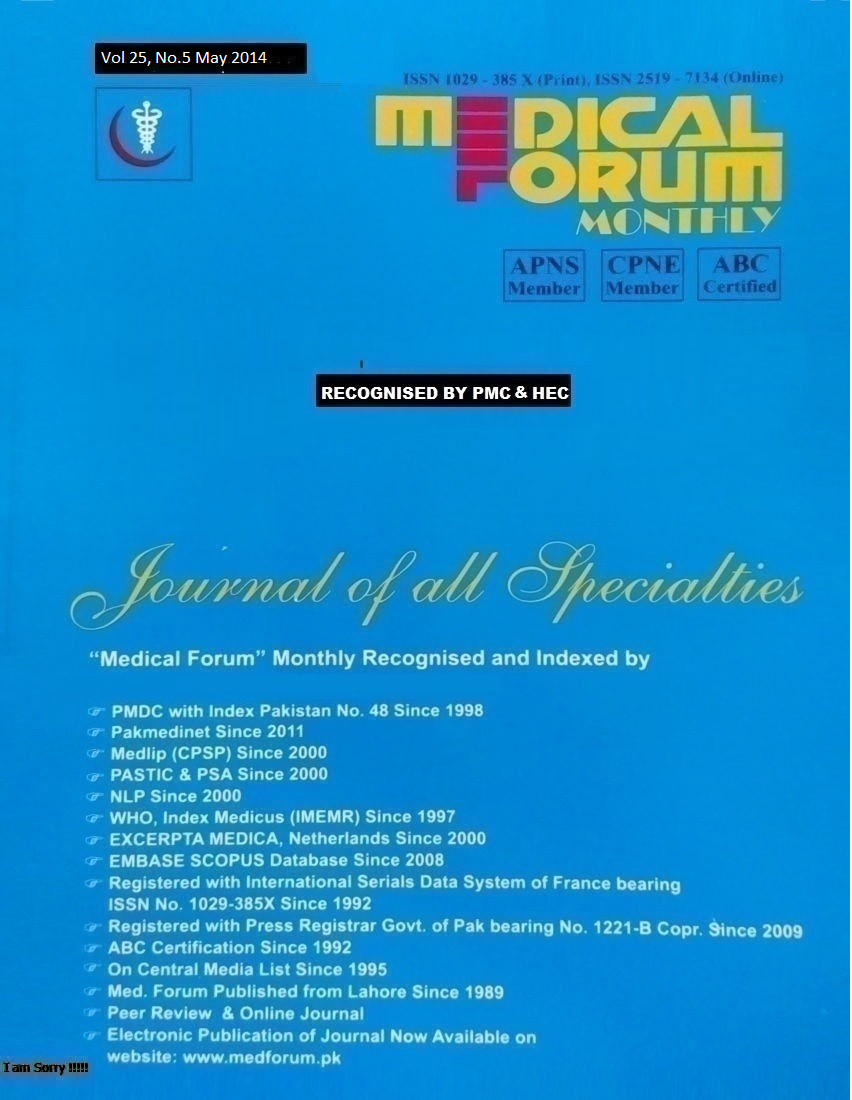
19. Three Years Audit of Maxillofacial Trauma at Abbasi Shaheed Hospital, Karachi
1. Zahid Ali 2. Saleem Shafique 3. Arsalan Ahmad Sheikh 4. Syed Sheraz Hussain
1. Asstt. Prof. of Oral & Maxiloficial Surgery, KM&DC, Abbassi Shaheed Hospital, Karachi 2. Asstt. Prof. of Oral & Maxiloficial Surgery, IM&DC, Hyderabad 3. Senior Registrar, Otorhinlogy, LUM&HS, Jamshoro 4. Assoc. Prof. of Orthodontists, KM&DC, Abbassi Shaheed Hospital, Karachi
ABSTRACT
Objective: The purpose of this retrospective study was to analyze the maxillofacial fractures treated during three years period with special attention to the age, causes, fractures pattern, clinical management and treatment modalities.
Study Design: Retrospective study
Place and Duration of Study: This study was carried out Oral & Maxillofacial Surgery Department of Abbasi Shaheed Hospital during the period of January 2008 to December 2010
Materials and Methods: 236 Patients data compiled. The data were reviewed and analyzed in terms of age, gender, aetiology, anatomical site and treatment methods.
 Results: A total of 236 patients were included in this study presenting with maxillofacial trauma out of these 93.6% were males and 6.4 % female .Overall male to female ratio was 15:1.The most common age involved was second decade. The most common cause was RTA (82%)followed by fall (7.2%) and then assault (5.5 %). The fracture of the mandible was the most common constituting about (72.5%) of the maxillofacial fractures followed by Zygomaticomaxillary complex (ZMC) fracture (14.4%) and then Maxilla (5.9%). Regarding treatment more than 50 % patients received ORIF (Open reduction Internal fixation) via bone plates while remaining received MMF (Maxillo-mandibular fixation).In ZMC Fracture ,Gillies Temporal approach alone is the most common approach accounting 67% of cases while in Le-forte fracture ORIF constitute the most common treatment method.
Results: A total of 236 patients were included in this study presenting with maxillofacial trauma out of these 93.6% were males and 6.4 % female .Overall male to female ratio was 15:1.The most common age involved was second decade. The most common cause was RTA (82%)followed by fall (7.2%) and then assault (5.5 %). The fracture of the mandible was the most common constituting about (72.5%) of the maxillofacial fractures followed by Zygomaticomaxillary complex (ZMC) fracture (14.4%) and then Maxilla (5.9%). Regarding treatment more than 50 % patients received ORIF (Open reduction Internal fixation) via bone plates while remaining received MMF (Maxillo-mandibular fixation).In ZMC Fracture ,Gillies Temporal approach alone is the most common approach accounting 67% of cases while in Le-forte fracture ORIF constitute the most common treatment method.
Conclusion: The causes and pattern of maxillofacial fractures reflect trauma patterns within the community and, as such, can provide a guide for the design of programs geared towards prevention and treatment. Key Words: Maxillofacial fractures, Mandible fractures, miniplates fixation,
